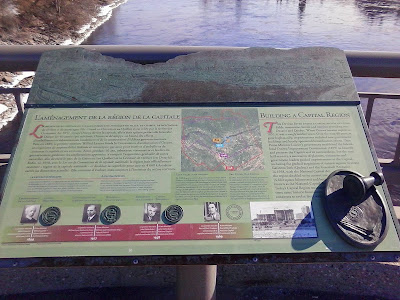You might remember back in early December I did a post from the Portage Bridge, looking downstream over the Ottawa River in a series of pics documenting the view over time. I decided to do so again, with the bulk of these views looking downstream again over the course of the winter. And I'll be doing the same from here again for the CDP theme day on Change coming up in October- perhaps a good idea for those of you considering options for that theme.
This view was taken in early December 2017. The familiar sights of Parliament Hill and the Supreme Court were illuminated in the sun.
A few days later, after some snow and colder temperatures, this was the view. As you can see in the background, the river was starting to ice up. A portion of the river here does tend to stay open through winter regardless, thanks to the fast flow coming off the Chaudiere Falls just upstream.
I crossed the road here to photograph west towards the falls that day. The Chaudiere Bridge is seen here at the heart of the shot. A careful eye might pick up the mist behind it; that is the spray off the waterfalls. The new viewing platform is wisely closed off over the winter; the amount of mist coming off the falls would freeze that up considerably and make walking on it treacherous.
This one I took on the first Sunday in January.
Here it was in late January.
And here we have a view in mid-February.
Here we see it as it was on the 11th of March. The ice was slowly wearing away downstream.
I finish with these views one week later.
This sign is found close to the Gatineau shoreline.
And close to that shoreline in the open water I heard the sound of Canada geese honking. Some of them were swimming about in the current, the first time I've seen any since last fall. Odds are these ones were just taking a break before continuing to fly for points further north.























































